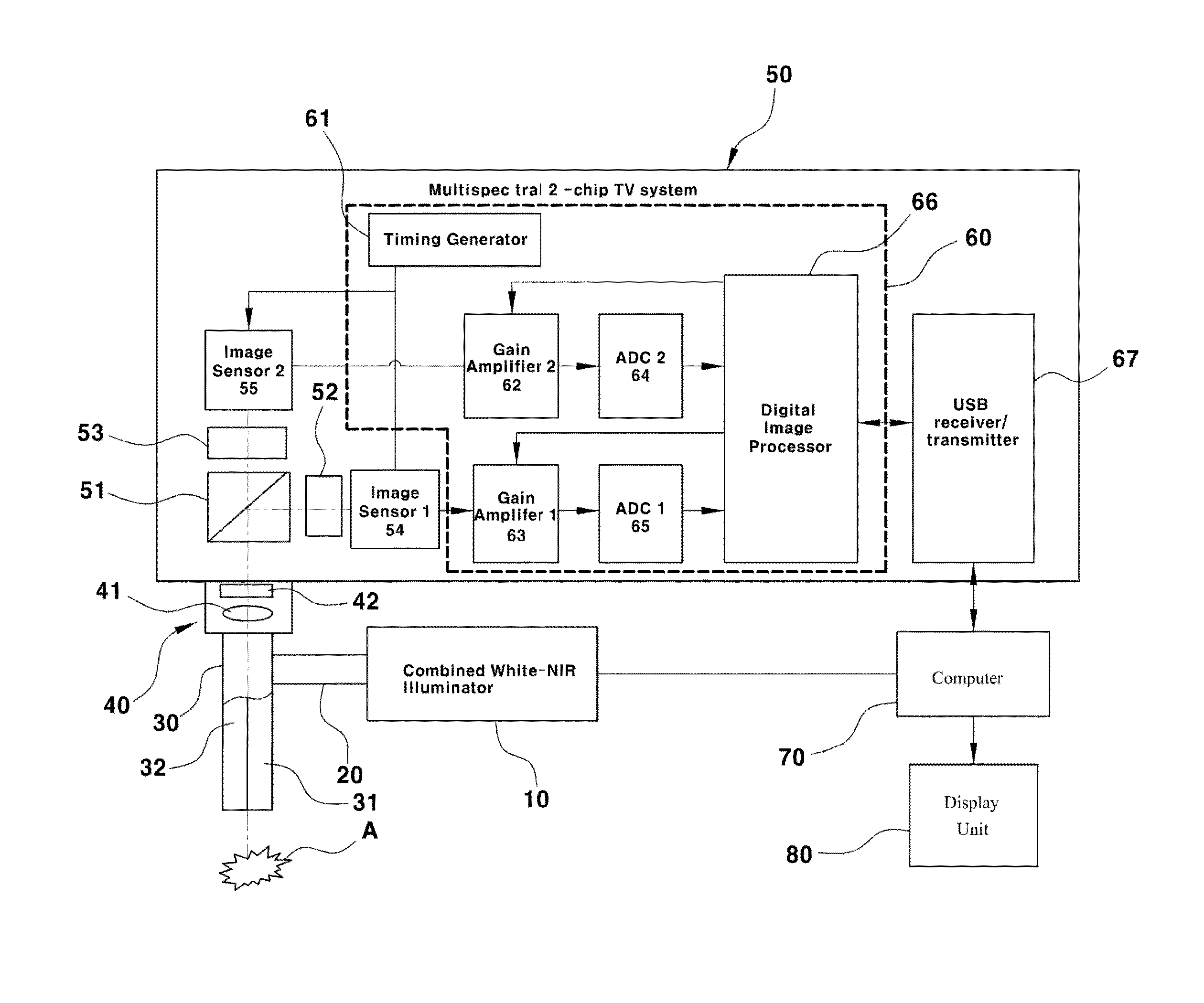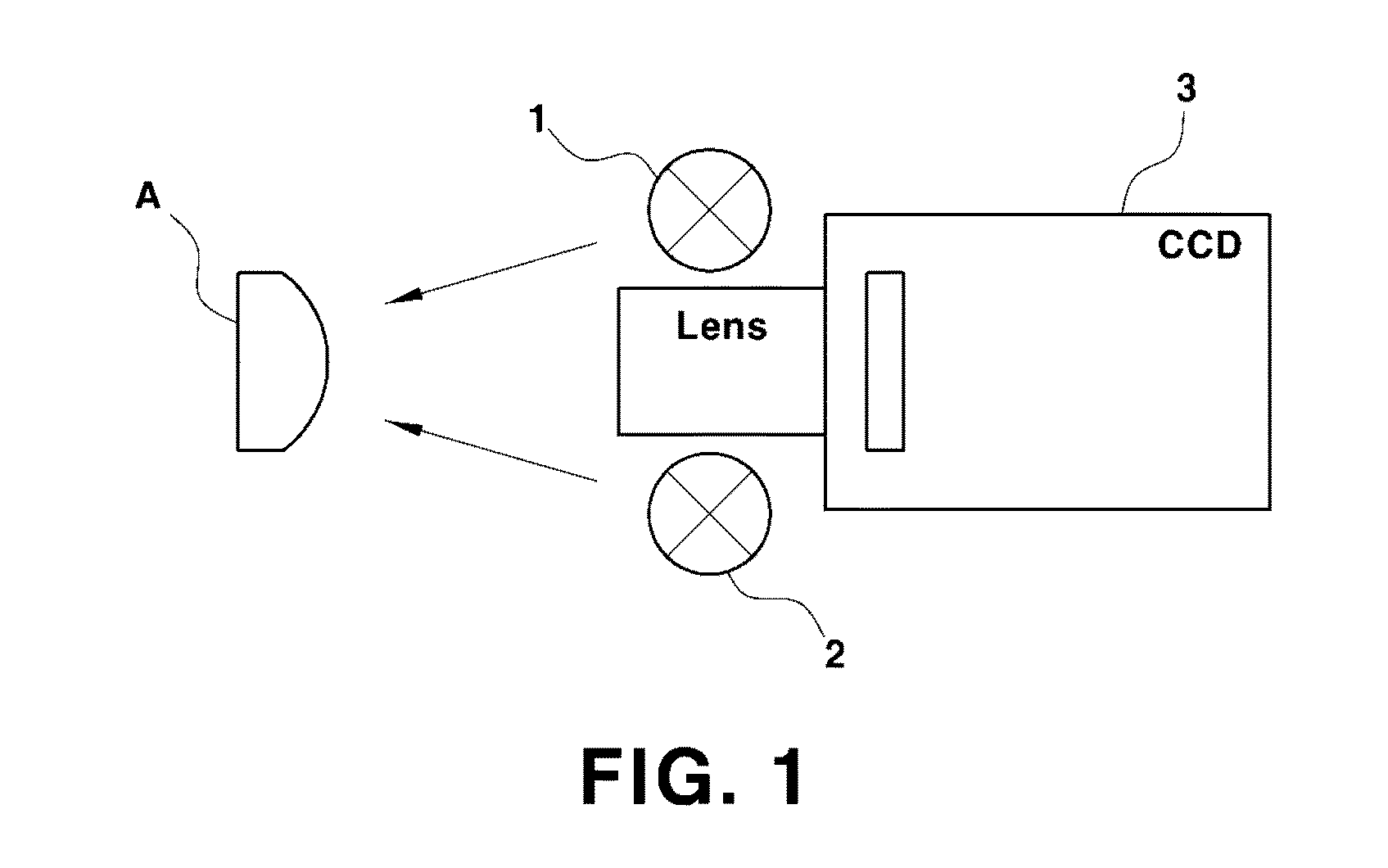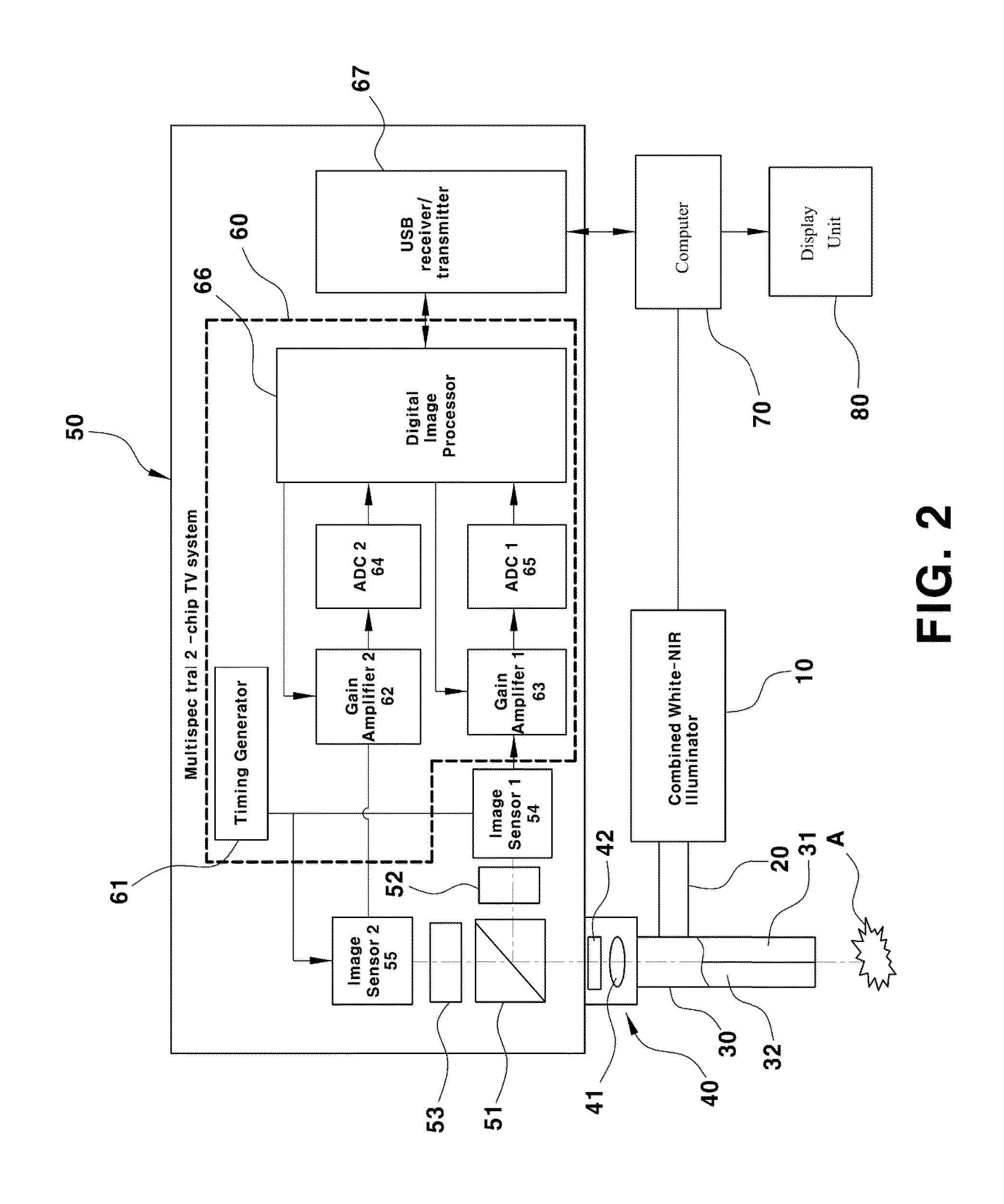Apparatus and method for detecting nir fluorescence at sentinel lymph node
a technology of sentinel lymph node and applicator, which is applied in the field of applicator for observing sentinel lymph nodes, can solve the problems of complex device, inability to see nir fluorescent light with the naked eye, and inability to observe fluorescent light in nir devices, and achieve the effect of high accuracy
- Summary
- Abstract
- Description
- Claims
- Application Information
AI Technical Summary
Benefits of technology
Problems solved by technology
Method used
Image
Examples
embodiment 1
[0121]In the configuration of a composite image under the condition of a mode in which white reflection light and ICG fluorescence are combined (Reflected White Image+ICG Fluorescence Image), the NIR image fluorescence image is selected other than the image of blue (B) image in a reflection light image background of red (R) and green (G).
[0122]The blue obtained from the white reflection light is not a characteristic element for the image of a tissue, and thus the SLN displayed by the NIR fluorescence is easily distinguished from other tissues. In addition, the SLN is distinguished from hot spots shown in the white reflection light. The white reflection light image forming the image background in the composite image is expressed by only the channels of red (R) and green (G). Since the hot spot has no blue, the hot spot is shown as yellow. Meanwhile, the NIR fluorescence image is shown as blue (B).
[0123]That is, a composite image output using the white reflection light (RG) and the NI...
embodiment 2
[0135]In this embodiment, the intensities of the blue (B) of the white reflection light and the NIR fluorescence are relatively compared for each pixel, so that one of both the blue (B) of the white reflection light and the NIR fluorescence, of which intensity is strong, is selected and output as the blue (B).
[0136]Thus, when the intensity of the blue (B) of the white reflection light is stronger than that of the NIR fluorescence, the blue (B) of the white reflection light is selected, thereby implementing RGB colors of the white reflection light together with the red (R) and the green (G). When the intensity of the NIR fluorescence is stronger than that of the blue (B) of the white reflection light, the NIR fluorescence is selected as the blue (B). Hence, the NIR fluorescence is output as a composite image together with the red (R) and the green (G) of the white reflection light.
[0137]FIG. 8 is a block diagram illustrating an example in which the blue (B) is selectively output by c...
embodiment 3
[0166]Through the temporal modulation method, the output mode of continuous laser is changed into a pulse mode having a repetition rate of 1 to 2 Hz that is much smaller than 15 Hz that is the frame rate of the light detection sensor of the TV system used in the endoscope.
[0167]Thus, the NIR image in the continuous VIS image background is periodically glittered due to the pulse mode.
[0168]In this embodiment, the temporal modulation method is performed separately from the color contrast method, and thus the VIS image maintains perfect colors (RGB). On the other hand, when the temporal modulation method is used together with the color contrast method of Embodiments 1 and 2, the blue (B) can be replaced in the NIR fluorescence image, and thus the VIS image may be formed with the red (R), the green (G), and the NIR fluorescence image. Alternatively, when the intensity of a blue (B) light signal is greater than that of the NIR fluorescence image, the VIS image may be perfectly formed wit...
PUM
 Login to View More
Login to View More Abstract
Description
Claims
Application Information
 Login to View More
Login to View More - R&D
- Intellectual Property
- Life Sciences
- Materials
- Tech Scout
- Unparalleled Data Quality
- Higher Quality Content
- 60% Fewer Hallucinations
Browse by: Latest US Patents, China's latest patents, Technical Efficacy Thesaurus, Application Domain, Technology Topic, Popular Technical Reports.
© 2025 PatSnap. All rights reserved.Legal|Privacy policy|Modern Slavery Act Transparency Statement|Sitemap|About US| Contact US: help@patsnap.com



